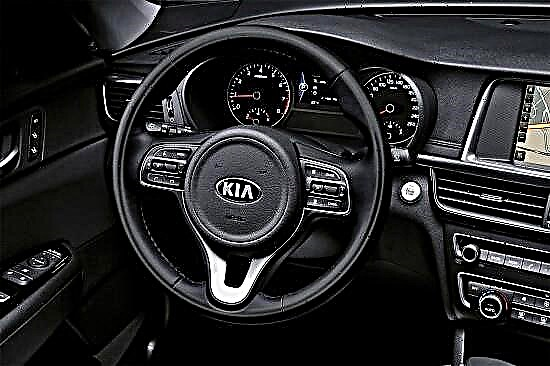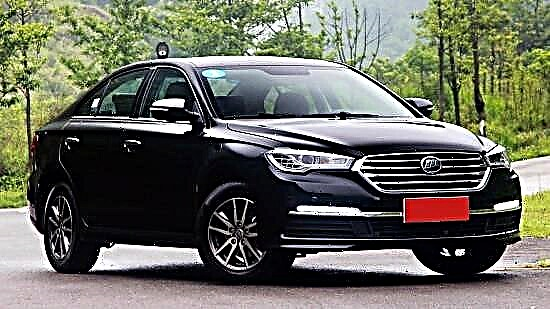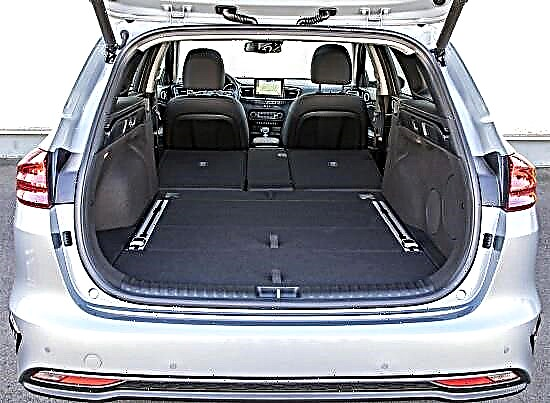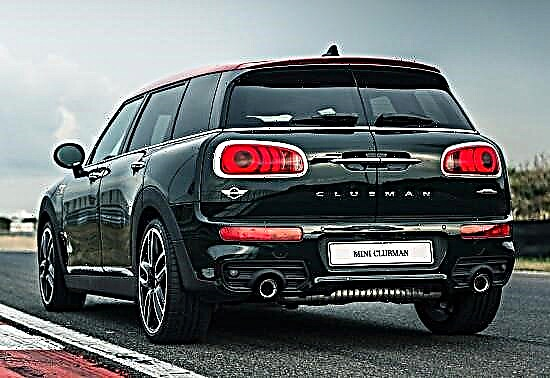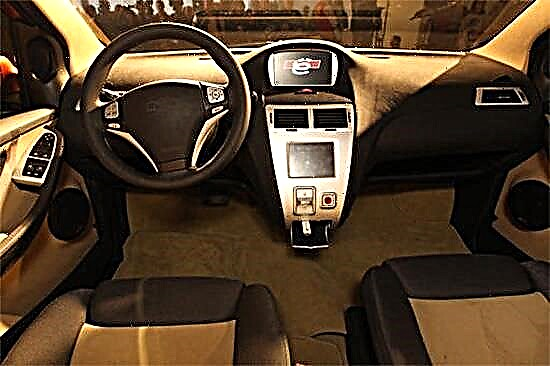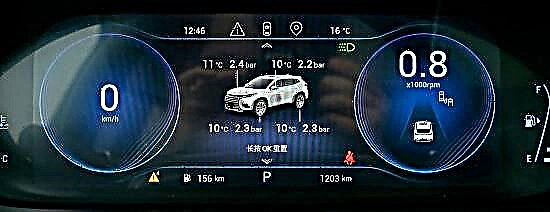Ratings of cars and auto products
Reviews, comparisons & tips for motorists
Introduction
According to statistics, cars are involved in more than 80% of all road traffic accidents. More than one million people die every year and about 500,000 are injured. In an effort to draw attention to this problem, every 3rd Sunday in November was declared by the UN "World Day of Remembrance for Victims of Road Traffic Accidents". Modern car safety systems are aimed at reducing the existing sad statistics on this issue. The designers of new cars always closely follow the standards of car production and safety. To do this, they simulate all kinds of dangerous situations in crash tests. Therefore, before being released, the car undergoes a thorough check and is suitable for safe use on the road.
Car accidents kill many people
But it is impossible to completely eliminate this type of incidents with this level of development of technology and society. Therefore, the main focus is on the prevention of an emergency and the elimination of the consequences after it.
Auto safety tests
The main body for assessing the safety of automobiles is the European New Car Test Association. It has existed since 1995. Each new car brand that has passed a series of tests is rated on a five-star scale - the more stars, the better.
Each new car brand must pass a series of tests
For example, through tests, they have proven that using high airbags reduces the risk of head injury by 5-6 times.
Active security options
Active car safety systems are a complex of design and operational properties that are aimed at reducing the likelihood of an accident on the road.
Let's analyze the main parameters that are responsible for the level of active security.
- For the efficiency of driving a car during braking, it is responsible braking properties, the serviceability of which allows you to avoid an accident. The anti-lock braking system is responsible for adjusting the braking level of each wheel and the wheel system as a whole.
Serviceability of the car's braking system greatly reduces the likelihood of an accident
- Traction properties cars affect the possibility of increasing the speed in motion, take part in overtaking, restructuring in traffic lanes and other maneuvers.
- The production and tuning of the suspension, steering, braking system is carried out using new quality standards and modern materials, which allows you to improve reliability systems.
New quality standards must ensure system reliability
- Has an impact on safety and auto layout... Cars with a front-engine layout are considered more preferable.
- For the best passing of the trajectory of movement, avoiding skids, throws to the side and other problems with deviations from the set path, is responsible vehicle stability.
- Vehicle handling - the ability of the car to move along the path chosen by the driver. One of the definitions characterizing handling is the ability of a car to change the vector of motion, provided that the steering wheel is stationary - understeer. Distinguish between tire and roll steering.
- Informativeness - a property of a car, the task of which is to provide the driver with information about the traffic intensity on the road, weather conditions and other things in a timely manner. Distinguish between internal information content, which depends on the viewing radius, the effective work of blowing and heating the glass; external, depending on the overall dimensions, color gamut of the car, serviceable headlights, brake lights; and additional informational content, which helps with fog, snowfall and at night.
- Comfort - a parameter responsible for creating favorable microclimate conditions while driving.
The driver must be provided with information about what is happening on the road
Active safety systems
The most popular active safety systems that significantly improve the efficiency of the braking system are:
1) Anti-lock braking system... It removes blocking of the wheels during braking. The task of the system is to prevent the car from slipping if the driver loses control during emergency braking. ABS reduces the braking distance, which will allow you to avoid hitting a pedestrian or getting into a ditch. The advantage of the anti-lock braking system is traction control and electronic stability control;
Anti-lock braking system (components)
2) Traction control system... The system is designed to improve vehicle handling in difficult weather conditions and conditions of poor adhesion, using a mechanism for influencing the drive wheels;
3) Exchange rate stability system... Prevents unpleasant car drifts thanks to the use of an electronic computer, which controls the torque of the wheel or wheels at the same time. The computer-led system takes control when the probability of loss of human control is close - therefore, it is a very effective car security system;
Exchange rate stability system
4) Brake force distribution system... Complements the anti-lock braking system. The main difference is that CPT helps control the braking system throughout the entire movement of the vehicle, not just during an emergency. She is responsible for the uniform distribution of braking forces on all wheels in order to maintain the trajectory set by the driver;
5) Electronic differential lock mechanism... The essence of its work is as follows: during skidding or sliding, a situation often arises that one of the wheels hangs in the air, continuing to spin, and the support wheel stops. The driver loses control of the vehicle, which creates the risk of an accident on the road. In turn, the differential lock allows you to transfer the torque to the semi-axles or cardan shafts, normalizing the movement of the car.
6) Automatic emergency braking mechanism... It helps in cases when the driver does not have time to fully press the brake pedal, i.e. the system automatically applies the braking pressure.
7) Pedestrian Approach Warning System... When a pedestrian approaches the car dangerously, the system will sound a signal to avoid an accident on the road and save his life.
There are also safety systems (assistants) that come into operation before the onset of an accident, as soon as they sense a potential threat to the driver's life, while taking over responsibility for the steering and braking system. A breakthrough for the development of these mechanisms gave a breakthrough in the study of electronic systems: new types of devices are being produced, the usefulness of control units is increasing.
These systems include:
- Various radar, acoustic and ultrasonic systems that warn the driver about an unfavorable distance from other cars, walls, obstacles;
- A system that allows you to automatically increase or decrease the speed when approaching other vehicles - adaptive cruise control;
Adaptive cruise control
- Handbrake - a mechanism that allows you to hold the car tightly on various surfaces at a certain angle, thereby protecting it from unplanned movements;
- Systems to help control smooth descent and ascent;
- Automatic steering system;
- Night vision system;
Night vision system
- Mechanisms for remote recognition of road signs;
- A system to recognize and take immediate action in the event of driver fatigue.
Passive safety elements
When the driver is no longer able to prevent an emergency on his own, the elements of the car's passive safety system come into play.
The system includes the following components:
- Seat belts.
Seat belts
The idea to create a mechanism for binding the driver to the seat appeared in 1907, and already in 1959 the first car belts were produced. To this day, they remain the cheapest and most effective security element. With the development of production technology and technology as a whole, belts with an automatic tensioning system began to appear, which are excellent when paired with airbags in an emergency: they are triggered immediately and press the person to the chair.
Depending on the type, model and build of the car, seat belts save life in 50-55% of cases.
- Airbags.
Airbags
The pillow is an unremarkable bag made of synthetic material, the main task of which is to take the load as a result of a collision with the human body. Now pillows practically do not leave damage on the human body, however, earlier they led to hematomas on the body, and in extreme cases could cause deafness. Very often this happened to people of short stature and children.
Using an airbag will save your life three times out of ten, and using the airbag and seatbelt in combination increases the chance of a positive outcome up to 80%.
- Seat headrests.
Seat headrests
The designers claim that the head restraints also protect our body, in particular the neck, from serious injury if it comes into contact with the car body in an emergency. However, according to the majority of people, the effectiveness of the head restraints is exaggerated, and protection is achieved only under certain conditions.
- Structural integrity of the framework. A strong frame is the key to the safety of the driver and passengers during an accident.
- Firmly anchored seat. Helps to restrain the driver as a result of an accident and prevent him from moving around the cabin.
- Bumpers. Designed to absorb energy at the moment of impact.
- Safe pedal assembly. It helps to avoid damage to the driver's legs, since the mechanism for separating the pedal from the attachment points during a collision is implemented.
- The technology for the production of glass based on triplex, which, when destroyed, does not cause much harm.
- The mechanism for moving the engine and other elements of the car to the lower part during an accident to prevent them from entering the cabin and causing damage to passengers.
Also, passive safety is influenced by the dimensions of the body, the more - the safer, and the color.
Conclusion
Thanks to the development of science, active and passive safety systems are constantly being improved. Modern cars are equipped with more advanced safety systems, which can significantly reduce the risk of an accident and reduce injury to passengers and damage to equipment. EU statistics confirm that the use of these systems has reduced the number of fatalities on the road by almost half. Therefore, when choosing your car, check that it has a good security system, as this will help avoid accidents on the road and save your life. What, in your opinion, are the most reliable car security systems?

